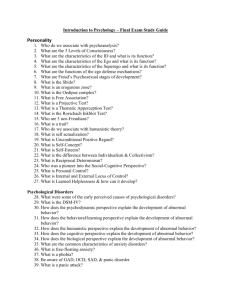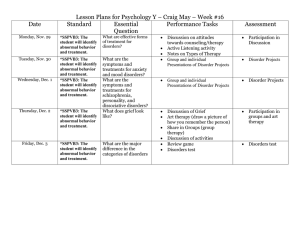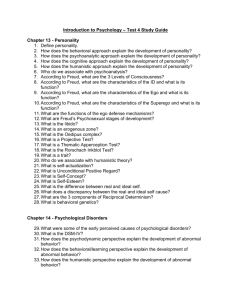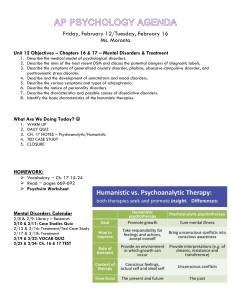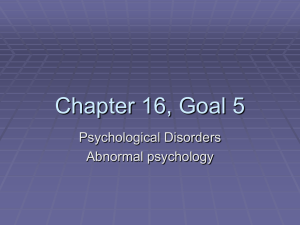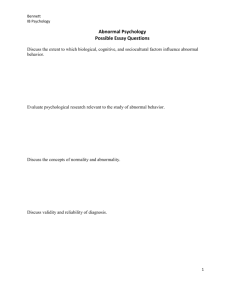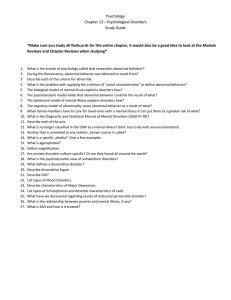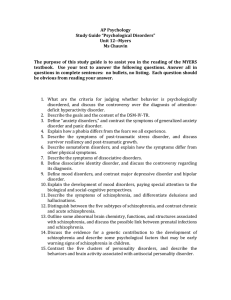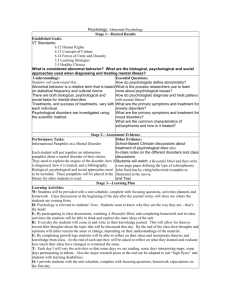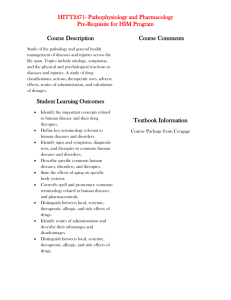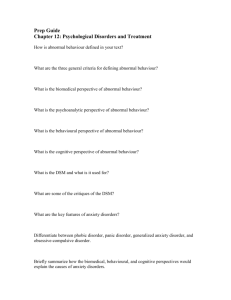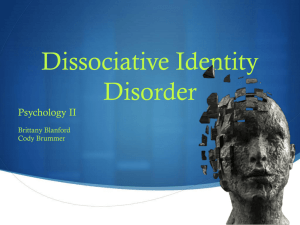Introduction to Psychology – Test 4 Study Guide CHAPTER 8
advertisement
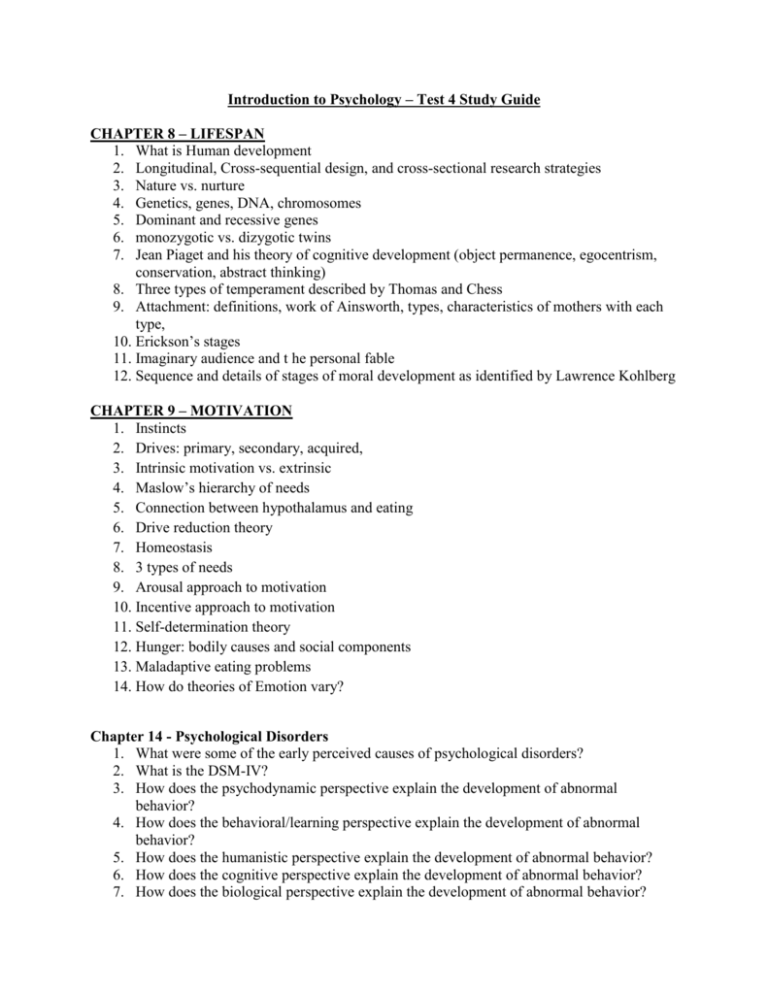
Introduction to Psychology – Test 4 Study Guide CHAPTER 8 – LIFESPAN 1. What is Human development 2. Longitudinal, Cross-sequential design, and cross-sectional research strategies 3. Nature vs. nurture 4. Genetics, genes, DNA, chromosomes 5. Dominant and recessive genes 6. monozygotic vs. dizygotic twins 7. Jean Piaget and his theory of cognitive development (object permanence, egocentrism, conservation, abstract thinking) 8. Three types of temperament described by Thomas and Chess 9. Attachment: definitions, work of Ainsworth, types, characteristics of mothers with each type, 10. Erickson’s stages 11. Imaginary audience and t he personal fable 12. Sequence and details of stages of moral development as identified by Lawrence Kohlberg CHAPTER 9 – MOTIVATION 1. Instincts 2. Drives: primary, secondary, acquired, 3. Intrinsic motivation vs. extrinsic 4. Maslow’s hierarchy of needs 5. Connection between hypothalamus and eating 6. Drive reduction theory 7. Homeostasis 8. 3 types of needs 9. Arousal approach to motivation 10. Incentive approach to motivation 11. Self-determination theory 12. Hunger: bodily causes and social components 13. Maladaptive eating problems 14. How do theories of Emotion vary? Chapter 14 - Psychological Disorders 1. What were some of the early perceived causes of psychological disorders? 2. What is the DSM-IV? 3. How does the psychodynamic perspective explain the development of abnormal behavior? 4. How does the behavioral/learning perspective explain the development of abnormal behavior? 5. How does the humanistic perspective explain the development of abnormal behavior? 6. How does the cognitive perspective explain the development of abnormal behavior? 7. How does the biological perspective explain the development of abnormal behavior? 8. What are the common characteristics of anxiety disorders? 9. What is free-floating anxiety? 10. What is a phobia? 11. Be aware of GAD, OCD, SAD, & panic disorder. 12. What is a panic attack? 13. What are the somatoform disorders? 14. What are the dissociative disorders? 15. What are the mood disorders? 16. What are the types of schizophrenia? 17. What types of delusions might a person experience? 18. What are hallucinations? 19. What is the difference between positive and negative symptoms in schizophrenia? 20. How is schizophrenia different from Dissociative Identity Disorder? 21. What are the characteristics of a person diagnosed with Antisocial Personality Disorder? 22. What are the characteristics of a person diagnosed with Borderline Personality Disorder? Chapter 15 - Therapy 23. What is Psychotherapy? 24. What is meant by the Eclectic Approach? 25. What is the therapeutic goal of Psychoanalysis? 26. What is free association? 27. In psychoanalysis, what is Resistance? 28. What is the therapeutic goal of Humanistic Therapy? 29. What are the techniques of Roger’s Person-Centered Therapy? 30. What is the therapeutic goal of Gestalt Therapy? 31. What is the therapeutic goal of Behavioral Therapy? 32. What is Counterconditioning? 33. What is Systematic Desensitization? 34. What is Aversion therapy/conditioning? 35. What is the Token Economy? How is it similar to a chore chart? 36. What is the therapeutic goal of Cognitive Therapy? 37. What is Cognitive-Behavior Therapy? 38. What do the A,B,C,D,& E stand for in Rational Emotive Therapy? 39. Be able to identify the ABC’s in a scenario such as: After Bruce lost his job he describes himself as a failure and has been depressed for 4 months. 40. What is electroconvulsive shock therapy?
